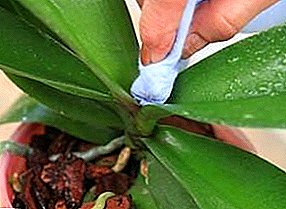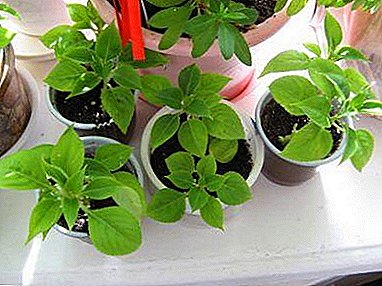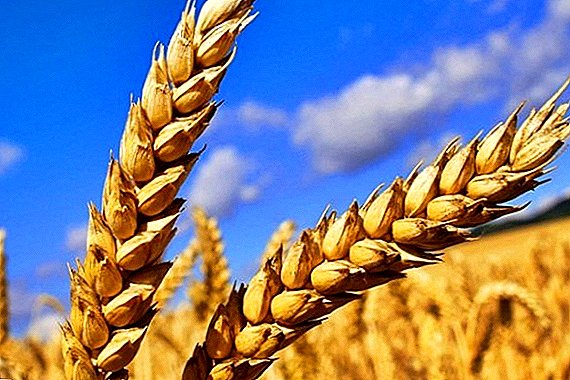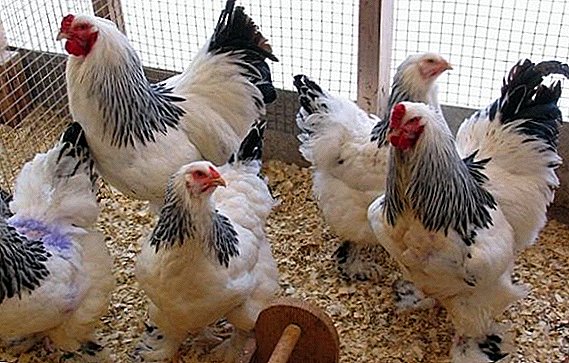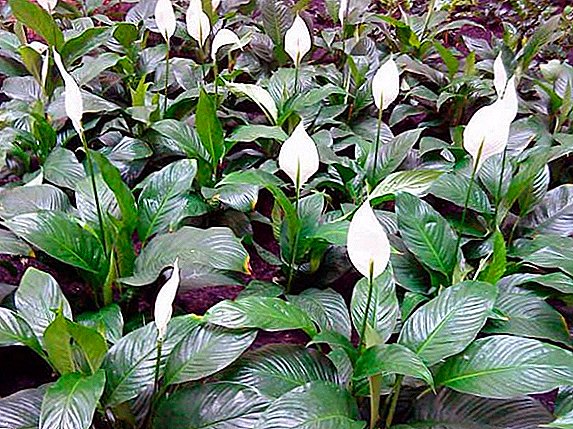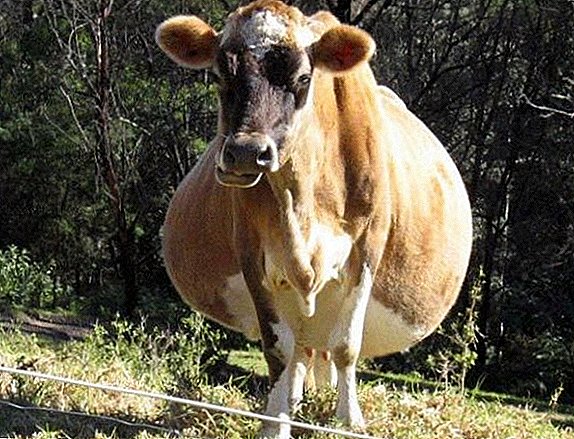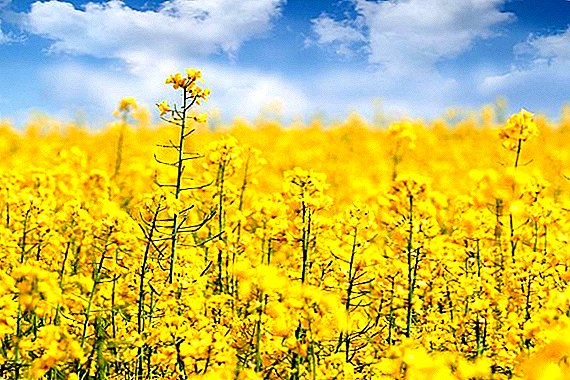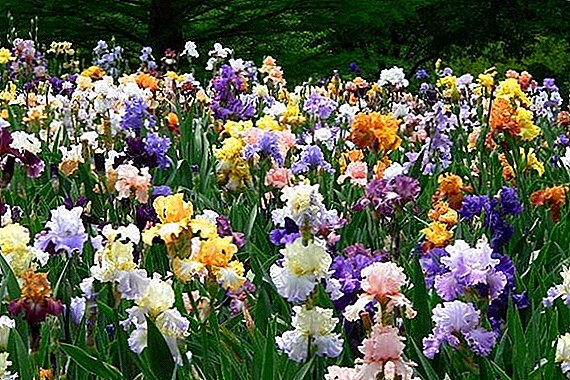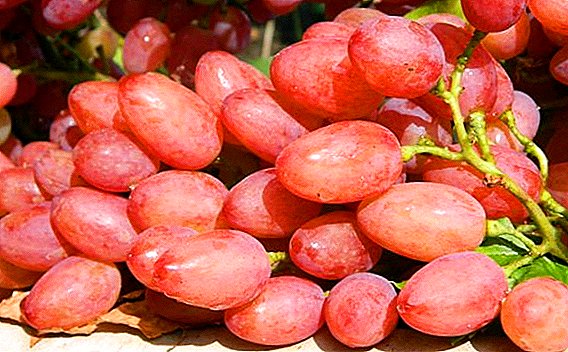 The seedless varieties of raisins have rightfully gained popularity among consumers due to their excellent taste.
The seedless varieties of raisins have rightfully gained popularity among consumers due to their excellent taste.
This type of table grapes is known from the Middle Ages, but continues to grow with new varieties.
One of these modern varieties is "Kishmish radiant".
Variety description
This variety was bred Moldovan breeders from NIIViv about thirty years ago on the basis of "Pink Kishmish" and varieties "Cardinal". It is widely believed that this is the most delicious grapes of this type.  In terms of ripening, it is early average, matures in about 130 days. "Kishmish radiant" is characterized by long sprawling shoots. Leaves are five-lobed, rounded. Clusters are large, reach 45 cm in length. Their average weight is 700–900 g, but specimens of 1.5 kg can be formed.
In terms of ripening, it is early average, matures in about 130 days. "Kishmish radiant" is characterized by long sprawling shoots. Leaves are five-lobed, rounded. Clusters are large, reach 45 cm in length. Their average weight is 700–900 g, but specimens of 1.5 kg can be formed.
Did you know? The name "kishmish" comes from the Turkic word "kish" (crush, squeeze) and means "squeezed, squeezed grapes".
Berries from grapes "Kishmish radiant" elongated, oval-shaped, weighing 4-5 g. The color is purplish-pink. The flesh is thick and juicy, the taste is pleasant, sweet with a little sourness. There is a muscat flavor and aroma. The sugar content of the fruit is within 17-21%, the acidity is 6-7 g / l. According to numerous reviews, their taste exceeds the taste of berries of other similar varieties.
Advantages and disadvantages
Of the merits of the "Radiant sultry", the following should be mentioned:
- great taste;
- high yield;
- early maturation;
- good preservation and transportability.
Read also about the variety "Kishmish Zaporozhsky".
This variety has certain disadvantages, in particular:
- insufficient resistance to low temperatures;
- vulnerability to mildew (downy mildew) and root phylloxera;
- need for careful care.

Features agrotehnika
Due to the lack of resistance to frost, "radiant kishmish" should be sheltered for the winter, for which you can use the land and pine needles. In addition, too heavy clusters can break off the vine. This problem is solved by controlling the number of shoots, as well as additional supports.
Important! Excessive number of clusters on the shoots affects the quality of the berries - their sugar content decreases, they become more watery, and the time of ripening of the crop increases. This problem is solved by pruning.
For planting choose a well-lit and protected from the winds of the place. The distance between seedlings should be at least 2.5 meters. This variety allows you to grow it on the arched structures.
Learn more about spring grape care measures: grafting, pruning, watering and fertilizing.
Care
Grape "radiant kishmish" is not easy to grow, it needs careful care, otherwise the quality of the berries will deteriorate, and in extreme cases, improper care may even lead to the death of the plant. 
Watering
This grape requires regular moderate watering. The amount of water depends on the quality of the soil. If "radiant kishmish" is grown on fertile black soil, then you will need 5-6 buckets of water for one bush. With worse quality soil, you may need up to 9 buckets per bush. The interval between irrigation is 3-4 days. Of course, this should take into account the weather conditions, in rainy periods do not need to get involved in watering. The most suitable for "radiant sultry" is drip irrigation.
Important! Approximately two weeks before harvesting should stop watering. In this case, a slight moistening of the soil is allowed, if the days are hot. During the flowering period, watering is also not performed.
Top dressing
Primary feeding is carried out on the eve of flowering, after the appearance of two or three leaves. Nitrogen-containing fertilizers are used as top-dressing. For top dressing of leaves before flowering, leaf topical preparations are used, such as "Plantafol". After the formation of the ovary, they are reprocessed with the same “Plantafol”.
To get bigger berries, grapes are treated with preparations related to gibberellins. It is important to bear in mind that an excess of fertilizers is extremely undesirable, this can lead to a delay in the start of flowering and, ultimately, to a decrease in the quality of the berries. 
Familiarize yourself with the features of autumnal care for grapes: vaccinations, pruning, transplants, fertilizing.
Pruning
As noted above, an excessive number of clusters leads to a deterioration in the taste of the berries. The optimal is the presence of up to two clusters to escape. In the process of pruning on young shoots leave 2-3 eyes, on the old - 10-14 eyes. The total load on an adult bush should be 25-30 holes. Pruning is carried out throughout the season. In addition to the extra whips remove dried shoots and stepchildren.
Did you know? On Earth under the vineyards is an area of approximately 80 thousand square meters. km, which slightly exceeds the size of a country like the Czech Republic.
Diseases and pests
The variety "Radish Kishmish" is not highly resistant to diseases. Particular danger for him are mildew and root phylloxera. To prevent these and other diseases spend regular processing of plants appropriate chemical preparations.
Pest grapes, such as goldfish, spider mites, mining moths, etc., as a rule, bypass the "radiant kishmish" side. But there is no guarantee that they will not attack this variety. In such cases, insecticides are used to control pests.
As you can see, "radiant kishmish" is not easy to grow. He will demand from the farmer careful care and compliance with the rules of agricultural technology. All this is more than compensated by the high yield and great taste of berries.


